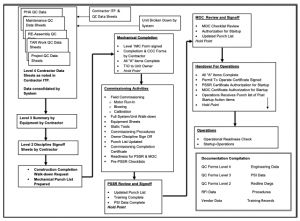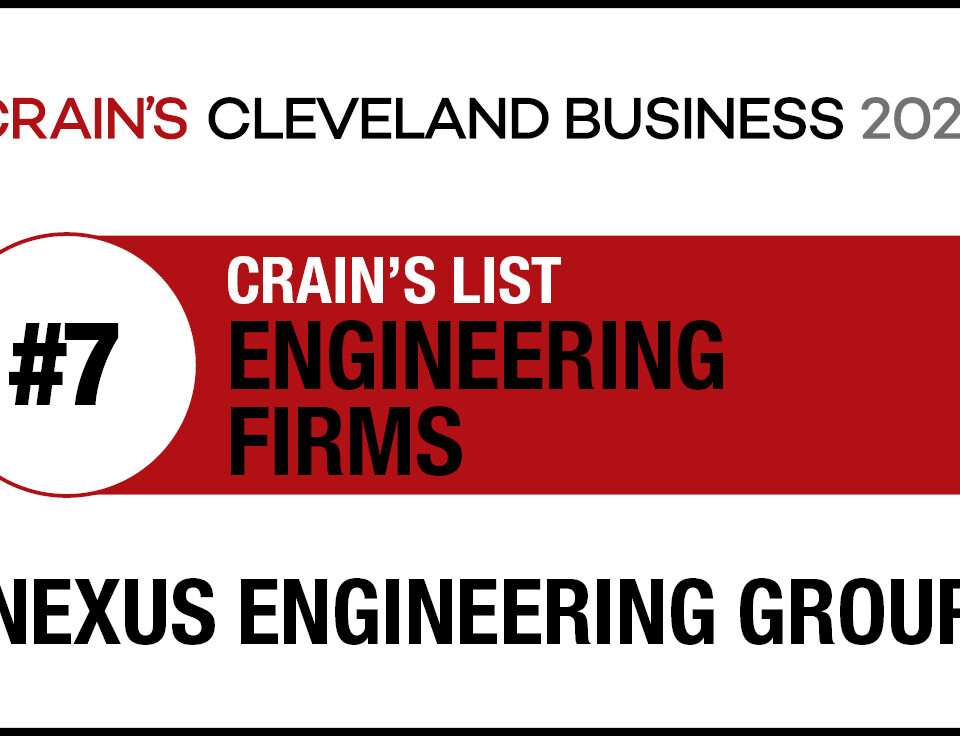Completions Management: Successful Completions Starts in the Front End

It’s a common problem with all sizes and types of projects. Many well designed, planned and executed projects near mechanical completion and then panic sets in. The project team realizes that activities critical to the key stakeholders’ acceptance of the plant for start-up and operation have not been defined, considered, or completed. The scramble to complete these activities to the stakeholders’ satisfaction starts, tensions rise, and the project end date slips away. Along with the delay, project costs increase, return on the investment decreases and market opportunities may vaporize.
Systematic Completions Management is a vital tool in preventing panic at the end of a project. As practiced by Nexus, Completions Management is a systematic approach to first defining the key stakeholders, all the activities, beyond the basic project scope, that must be completed prior to acceptance, and the criteria for their acceptance. The deliverables of the Completions Management process are documented records demonstrating the defined activities have met the stakeholders’ predefined acceptance criteria. Correctly applying a fit for purpose Completions Management plan to any project improves the project’s chances of both starting up on time and minimizing incidents and problems during the early plant operation.
Effective Completions Management planning must start during the Front End Loading (FEL) phase of the project. Completions Management activities must be carried out during the design phase and on through construction.
Completions Management Overview
Most projects typically start with a few people creating a vision of project scope, cost and schedule and expectations for financial performance. This vision is created with minimal input from the various stakeholders who will ultimately influence or accept the project. The stakeholders can include the direct project team participants. Other stakeholders may include business management, the community, regulators and the operators and maintenance professionals who will integrate the project into a new or ongoing business. May 2019
Identifying these key stakeholders, the activities they expect to be completed with the project and their acceptance criteria can be a significant challenge. Using a guideline to identify the stakeholders, a list of typical activities and acceptance criteria is an effective way to tackle this challenge. Nexus has developed tools and flow charts to help this effort.
Once the activities and their acceptance criteria are identified, a plan for breaking down the project into manageable pieces or systems for completions tracking can progress. Documentation can then be collected to demonstrate completions in accordance with the acceptance criteria for each of the identified systems.
During the facility’s physical construction, the construction contractor is focused on the project’s installation efficiency. When the installation is approximately 80 percent complete, the contractor enters the turnover point of construction using the system approach. The first system might be the feed system, then the processing system and then the product system. The checkout of the systems is the final step prior to commissioning and putting the systems in operations.
Moving to a systems completions process towards the end of construction allows for a sharper focus and more efficient completion of the plant. This allows the project team to accept one completed system at a time and avoids a potential avalanche of turn over activity at the end of construction.
The following sketches illustrates the building of completions documentation to support final acceptance of the plant by the operational and other key stakeholders:

Completions Management Key Components
The critical components of Completions Management include the following:
- Stakeholder Identification: As noted above, recognizing the key stakeholders, and defining their acceptance criteria for all aspects of the project is crucial to project success.
- List of Activities and Non-Technical Deliverables: This is the definition of all activities associated with the project that must be completed prior to acceptance for operation. This list may include, but not be limited to, operational training requirements, spare parts, warehousing, maintenance contracts, accounting and billing systems, product quality assurance including lab equipment and testing protocol, etc.
- Quality Assurance and Documentation: This consists of verifying both the supply of equipment and installation in conformance with the project requirements. It is important to both complete the quality assurance activity and collect this documentation as the project progresses. Hold points on the installation are critical to minimize the needed to undo completed items to verify critical quality assurance has been completed.
- Final Acceptance Reviews: A project may require and must successfully complete several regulatory required reviews. Other reviews may be required by the business and other key stakeholders. Again, it is critical to identify the required reviews along with the criteria for acceptable performance.
Summary
Systematic Completions Management promotes safety, predictable project execution and timely onstream.
Successful Completions Management starts in FEL and is executed throughout detailed design, procurement and construction.
Following a disciplined methodology increases the odds that the project’s vision and financial expectations are achieved.
About the Author:
Tony Raiche
Senior Advisor, Completions Expert
For more information visit www.nexusegroup.com, or email us at info@nexusegroup.com



